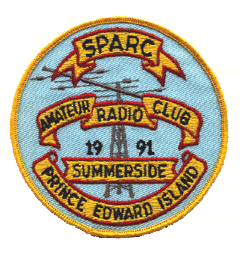Motorola used the trade mark “Handie Talkie” for all of its small radios, including packsets. See photos at end of article.
It has been my habit to use the name “Walkie Talkie” for any radio you have to carry (or lug) around that uses a separate microphone or handset.
I use the name “Handie Talkie” for any radio that has a self contained battery, earphone/microphone and is held in one hand, like a cell phone.
There were various 10 meter Walkie Talkies made back in the 1950’s.
RCA Ham Tips, May 1960, had one by W2VCG. It had a 6AK5 and 2 audio transistors.
It was even crystal controlled.
You can see it at http://n4trb.com/AmateurRadio/RCA_Ham_Tips/issues/rcahamtips2002.pdf
Maybe you still have one of those old Walkie Talkies out in the warehouse.
The first really cool 2 meter one I recall was the “Tiny Tim” by W6TWL.
It had 2 – 957 acorn tubes in it and was about 7 x 3 x 1 inch and weighed 1.5 pounds.
It was originally used on the 112 MC WERS band and then converted to 2 meters.
You can see it in CQ Magazine, April 1946, Pages 57 and 58.
You can find the old CQ Magazines archived at: http://hamcall.net/cqcgi
For only $5 you can search the CQ archives for 1 day and download the schematics.
The one that I built when I was in high school was the Bill Vogel, W2MYE, version.
I lost it some where during the years.
It used a 958A acorn tube and a 3A4 audio tube. It was built into a LMB box that was about 3 x 3 x 8 inches.
They had an old C.F. Cannon, 1000 ohm earphone and an F1 carbon microphone on the front.
There was a UHF antenna connector on top, a butterfly tuning cap, and a side mounted push to talk button. It was all powered from an XX67 battery and a “D” cell.
These rigs had super regen receivers and if you turned the receiver on at a Transmitter Hunt starting area you would jam out 1 MHz of the band and people would come looking for you.
They are modulated oscillators and not really legal to operate these days.
You won’t get much ‘on the airtime’ but that is OK because the battery is very expensive.
The details of construction are in CQ Magazine Jan. 1946, p. 7-11.
I once had a 35-mile QSO with mine.
These Handie Talkies worked well with the proliferation of the 2-meter Gonset Communicators.
All the old Gonset’s had wide receivers and were easy to tune and track the Handie Talkies as they started to drift.
I thought this would be a great radio replica project.
The hardest part of building the unit was collecting the parts.
The 3 winding “Transceiver” transformer is most difficult to find but it could be replaced with 2 individual transformers.
There are 2 types of Transceiver transformers that were used for this application back then.
The Stancor 3833 or the Inca I-45.
I found the Stancor transformer on eBay.
I built my new ‘replica’ Handie Talkie into a new 8 x 3 x 2.75 inch LMB box.
My new ‘replica’ has a few variations but is very similar to the original.
I used a blue LMB box and not the old grey type.
My microphone is a “T1” carbon button, not the bigger “F1” button.
You will also notice there is no antenna connector, I just built the telescoping whip into the box like the BC-611.
See pictures of the Handie Talkie and the inside view of the Handie Talkie wiring.
You will also notice the old CQ Magazine articles giving instructions on how to make telescoping whips and other things.
There were no solid-state Walkie Talkies at the time.
If you were lucky to get your hands on some war surplus you might have found some
BC-611’s (75 meter AM phone) and later the PRC-6 Handie Talkies (6 meter FM) or the Motorola FTRU Walkie Talkies.
Springfield Enterprises’ Co made a “Springfield Walkie Talkie” that was very popular in the 50’s.
It used 3 – 3A5’s tubes with a super regen receiver.
Paul W0RW
PICS:



